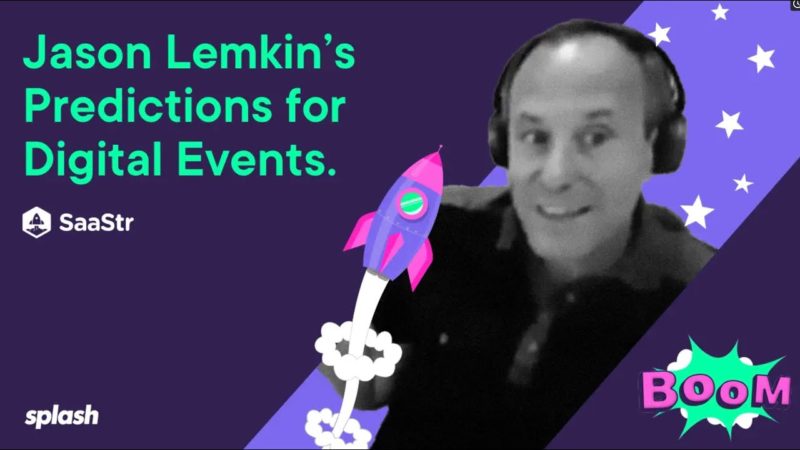In this article today, we are going to look into the enthusiastic conversation happening between Ben of Splash, and Jason Lemkin of SaaStr.
Find Jason Lemkin sharing some key insights into evolution of digital events, post-pandemic event formats, event tech-stack, and also talking about sponsorship strategies, top field marketer strategies that drive ROI & results. Interesting! Isn’t it?
So, let us dive in and have a look at what Jason Lemkin has to say?
Hi, I am Ben, the co-founder and CEO of Splash, talking to Jason Lemkin – CEO of SaaStr, investor, entrepreneur and event planner.
Jason M. Lemkin runs SaaStr, the world’s biggest association for B2B/SaaS founders, and is the managing director of SaaStr Fund, a $90m venture capital company focused on early-stage business investments.
Contents:-
- Jason Lemkin’s Predictions for Digital Events (SaaStr 2020)
- Looking ahead, how do you expect digital events will continue to evolve?
- Post-pandemic, how event formats or planners will need to evolve?
- As this is a show for event marketers, have you seen any new trends or evolutions in the event tech stack that are worth noting?
- Looking at the sponsorship game evolution in a digital-first world, what are the strategies that we can learn?
- What are the top field marketers doing to drive ROI & get results?
Are you a field marketer speccing out your sponsorship spend?
Then, hold on to your scanners and pop your banners because this conversation with Jason Lemkin got a little sassy to the cloud.
Welcome to boom, a show about the innovation explosion in events and the tech stack.
Our guest Jason Lemkin has a unique and sharp perspective on all tech and events.
SaaStr annual eventhas been the centre of the cloud revolution. Started in 2012, they hosted their first conference back in 2015 & now claim the world’s largest community of SAS executives, founders and entrepreneurs.
SaaStrwas the first conference that dropped due to the pandemic. But, bounced back with a fully online convention this December, & is all set to welcome 50 000 attendees.
In a conversation with Jason Lemkin, I have uncovered some of the highlights like
- Perpendicular events
- What is next in the collaboration suite
So, let’s jump in and see what Jason Lemkin has to say.
Table of Contents
- 1. Looking ahead, how do you expect digital events will continue to evolve?
- So, how we can use these tools?
- 2. Post-pandemic, how event formats or planners will need to evolve?
- 3. As this is a show for event marketers, have you seen any new trends or evolutions in the event tech stack that are worth noting?
- 4. Looking at the sponsorship game evolution in a digital-first world, what are the strategies that we can learn?
- Why do the sponsors sponsor?
- 5. What are the top field marketers doing to drive ROI& get results?
1. Looking ahead, how do you expect digital events will continue to evolve?
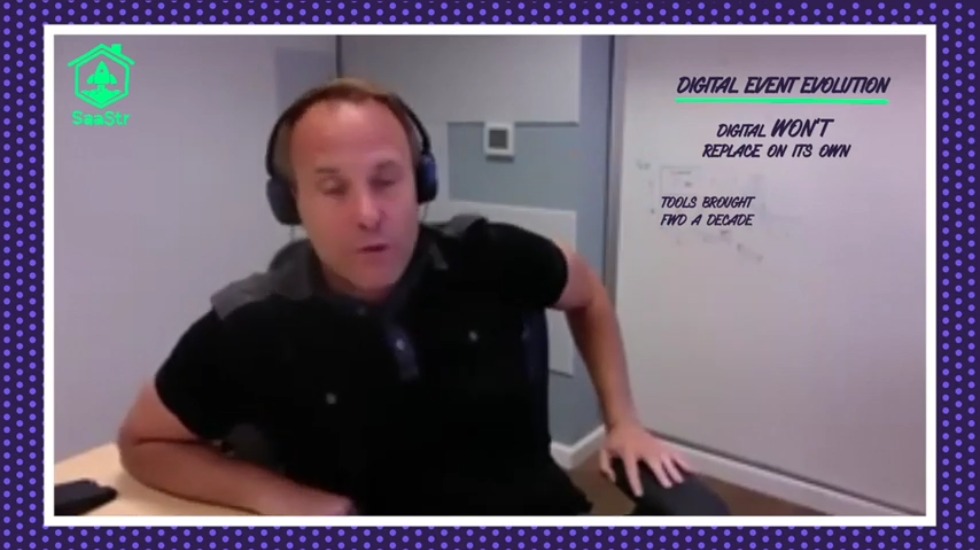
Be it SaaStr or Dreamforce, neither of these are going to be replaced by digital. And going deep, what we can understand is, the tools are outdated & made before a decade.
So, how we can use these tools?
You can have user, customer & also prospect conferences on the internet that you can never afford to have in the real world. Because it is too pricey& complex.
Explaining further, Jason says, I think the larger events will have a much better digital component than they ever did. The next events will be on steroids. And that will be all fired through software.
Communities like web summits will build their own, and all others will buy. The big events will have much better functionality, like – an order of magnitude more functionality, with no live streaming.
And then, digital-only events will not replace IRL events as they have since COVID.
They will be better, authentic, will connect more people, have more content & interactions.
Pure digital events were worth it. So, everyone’s going to try to do that right. For that, they will need all the tools and software. Because of the crappy stuff we had before March, none of it did it right.
2. Post-pandemic, how event formats or planners will need to evolve?
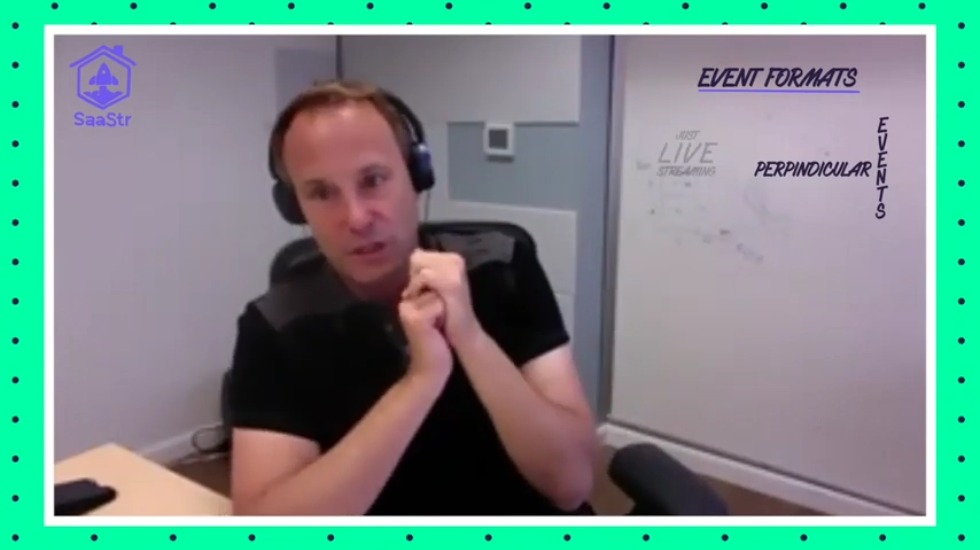
Moving ahead: there will be perpendicular events, not hybrid events which are live streaming.
In the last hybrid events, no one tuned in and the engagement sucked.
So, you will have a perpendicular product that is not live streaming.Now, the focus is – the rest of your community. The other 15 000 people that can attend faster.
Next year, we plan to have a hundred thousand to ten digitally & it won’t be the same.The experience will vary with round tables, meetups, jobs boards and parties.
For in-person, they’ll have a different experience. That which is not hybrid, but rich.
It’s the perpendicular experience now.
Steering forward, there’ll be more work because you will have this horizontal perpendicular content for the rest of your community. And the only way you’ll be able to keep up is with tools & software.
3. As this is a show for event marketers, have you seen any new trends or evolutions in the event tech stack that are worth noting?
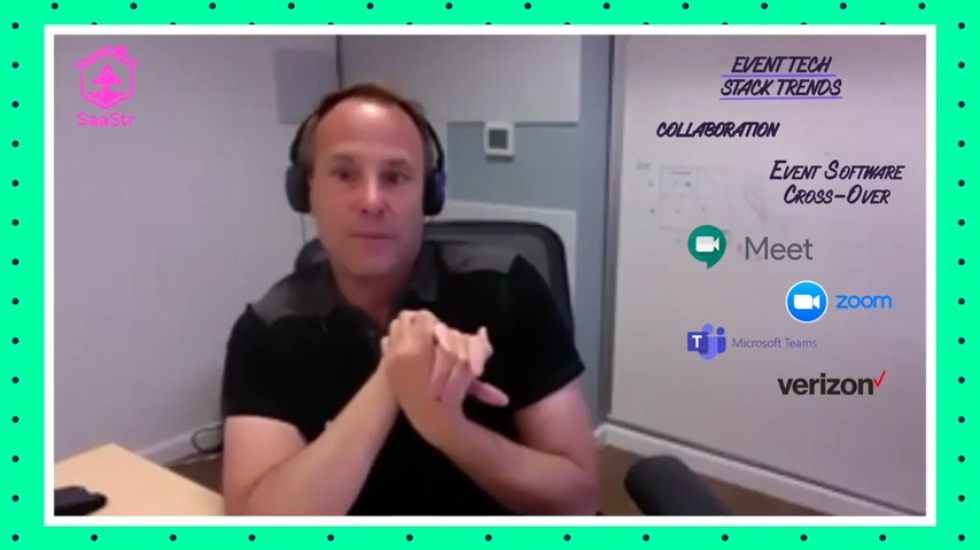
Evolutions can play a big in workplace collaborations. The internal change is big but the external is even bigger. The fact that it would merge with event software is a completely new scenario. We did not see that coming before.
Do you know? Popular meeting space, Zoom is getting into events now. The reason is digital events has crossed over into collaboration software. And, that’s why even the Microsoft teams have limited theirevents capability. Because, before COVID, these companies never considered event software as collaboration software.
4. Looking at the sponsorship game evolution in a digital-first world, what are the strategies that we can learn?

After understanding all the pain points, there still remains one question.
Why do the sponsors sponsor?
In our recent analysis, on Cloud – 40 leads came from 40.
Every field marketer, in some way, tries to criticize the event.
Despite the good and the bad, we must deploy the capital because that’s how it works.
We can’t say that it works as elegantly & perfectly as Google Ad Words. But buyers do log in to our virtual events platforms to talk to someone, to learn, to experience and to make better decisions.
With digital events, you cannot say you will stop trying. You have to try and see that it performs. For digital events, you need to deliver deck and breadth, & more prospects.
If you ask why?
Because even if you deliver high-quality prospects, it’s still not the same as talking to Alexa in the booth. It might be better but it is different. So, you will need depth and breadth.
5. What are the top field marketers doing to drive ROI& get results?
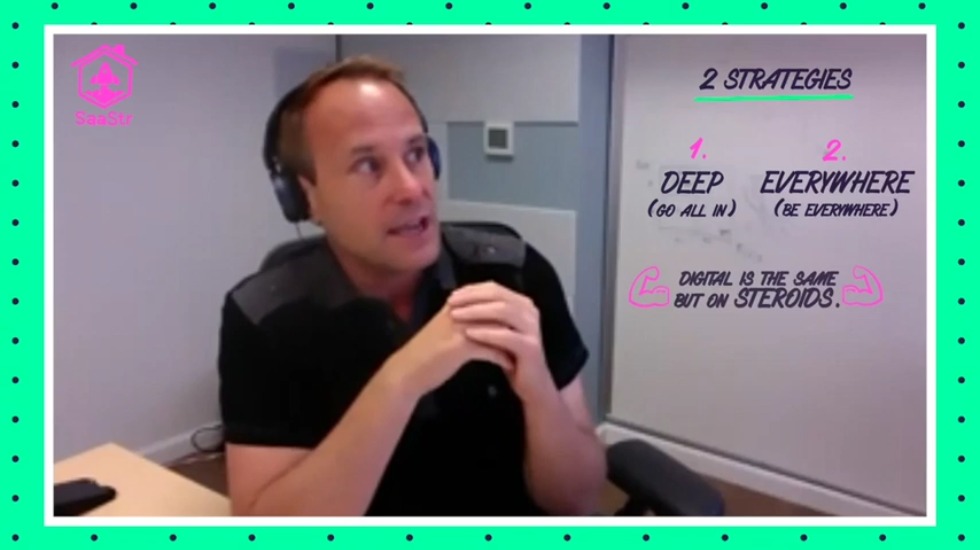
There are two strategies for events. And only if you consider both you can go deep and do a couple of events in your industry.
At Dreamforce, people would invest massive amounts of money. Be it RSA, web summits & even shop talks for e-commerce, people, go all-in for one or two events.
In any way, you can blow a million bucks or more, including soft costs
Consider me. I am going to be at everything.
I might have the smallest booth at the show but, I’ll be open to every happening event in the industry. To make sure my prospects see me.
Event marketers have different strategies. “You’ve got to do what you’re good at,” and so I think for digital, it’s going to be the same.
On steroids, you got to pick a couple of things and lean in deeply to get your brand all over, everywhere. Because; you may see lower ROI like anything in events if you don’t put in the best effort. And, if you don’t get the effort out, it doesn’t provide value to CEOs or founders.
We see a bright future for digital and virtual events. But, it’s still early days.
Events are happening, and I believe they could be massive on the internet.
What we learned is social media gatherings can be huge. And so, the digital events should be bigger and better than your IRL event.


